-
 Bitcoin
Bitcoin $106,754.6083
1.33% -
 Ethereum
Ethereum $2,625.8249
3.80% -
 Tether USDt
Tether USDt $1.0001
-0.03% -
 XRP
XRP $2.1891
1.67% -
 BNB
BNB $654.5220
0.66% -
 Solana
Solana $156.9428
7.28% -
 USDC
USDC $0.9998
0.00% -
 Dogecoin
Dogecoin $0.1780
1.14% -
 TRON
TRON $0.2706
-0.16% -
 Cardano
Cardano $0.6470
2.77% -
 Hyperliquid
Hyperliquid $44.6467
10.24% -
 Sui
Sui $3.1128
3.86% -
 Bitcoin Cash
Bitcoin Cash $455.7646
3.00% -
 Chainlink
Chainlink $13.6858
4.08% -
 UNUS SED LEO
UNUS SED LEO $9.2682
0.21% -
 Avalanche
Avalanche $19.7433
3.79% -
 Stellar
Stellar $0.2616
1.64% -
 Toncoin
Toncoin $3.0222
2.19% -
 Shiba Inu
Shiba Inu $0.0...01220
1.49% -
 Hedera
Hedera $0.1580
2.75% -
 Litecoin
Litecoin $87.4964
2.29% -
 Polkadot
Polkadot $3.8958
3.05% -
 Ethena USDe
Ethena USDe $1.0000
-0.04% -
 Monero
Monero $317.2263
0.26% -
 Bitget Token
Bitget Token $4.5985
1.68% -
 Dai
Dai $0.9999
0.00% -
 Pepe
Pepe $0.0...01140
2.44% -
 Uniswap
Uniswap $7.6065
5.29% -
 Pi
Pi $0.6042
-2.00% -
 Aave
Aave $289.6343
6.02%
How to make cross-chain top-ups on Bybit?
Bybit supports cross-chain deposits for seamless fund management; always verify networks and addresses to avoid irreversible loss of funds.
Mar 28, 2025 at 01:21 am
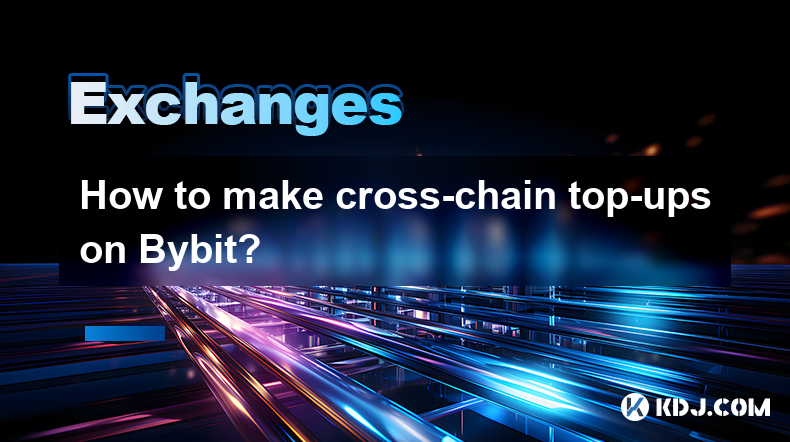
Understanding Cross-Chain Top-Ups on Bybit
Bybit, a popular cryptocurrency exchange, supports cross-chain deposits, allowing users to transfer funds from one blockchain network to another directly into their Bybit account. This is particularly useful when dealing with assets like Ethereum (ETH) or stablecoins like USDT, which exist on multiple networks (e.g., Ethereum, Tron, Omni). Understanding the process is crucial for seamless and efficient fund management. Incorrectly selecting a network can lead to irreversible loss of funds.
Preparing for a Cross-Chain Top-Up
Before initiating a cross-chain deposit, several preparatory steps are essential:
Identify the Supported Networks: Check Bybit's official website or app for the specific networks supported for each cryptocurrency. Not all networks are supported for every asset. Always verify the supported networks before proceeding.
Obtain the Deposit Address: On the Bybit platform, navigate to your "Deposit" page. Select the cryptocurrency and the specific network you intend to use for the deposit. Bybit will then provide you with a unique deposit address for that network. This address is crucial; sending funds to the wrong address will result in irreversible loss.
Confirm Network Fees: Be aware of the network fees associated with transferring your cryptocurrency. These fees vary depending on the network's congestion and transaction size. Factor network fees into your transfer to avoid unexpected costs.
The Step-by-Step Guide to Cross-Chain Deposits on Bybit
The exact steps may vary slightly depending on your chosen cryptocurrency and network, but the general process remains consistent:
Initiate the Transfer: On your external wallet (e.g., MetaMask, Trust Wallet), initiate a withdrawal transaction. Input the Bybit deposit address you obtained earlier. Double-check the address before confirming the transaction.
Select the Correct Network: In your external wallet, carefully select the same blockchain network that corresponds to the Bybit deposit address you received. Mistakes here lead to lost funds.
Enter the Amount: Specify the amount of cryptocurrency you wish to deposit. Remember to account for network fees.
Confirm the Transaction: Review all details (address, network, amount, fees) carefully before confirming the transaction. Once confirmed, the transaction cannot be reversed.
Monitor the Transaction: After confirming the transaction, monitor its progress on the blockchain explorer for your chosen network. This allows you to track its status and estimated arrival time at Bybit.
Troubleshooting Common Issues
Transaction Stuck: If your transaction is taking unusually long, check the network's status and transaction fees. High network congestion can cause delays. Contact Bybit support if the issue persists.
Incorrect Network: If you sent funds to the wrong network, unfortunately, recovery is usually impossible. Always double-check the network before sending.
Insufficient Funds: Ensure you have sufficient funds in your external wallet to cover both the transfer amount and the network fees.
Understanding Different Blockchains and Their Implications
Different blockchains have different characteristics affecting transaction speeds and fees. For example, Ethereum often has higher fees than Binance Smart Chain (BSC). Choosing the appropriate network depends on your priorities – speed versus cost. Bybit supports multiple networks for many assets, allowing flexibility.
Security Best Practices for Cross-Chain Deposits
Use a reputable wallet: Choose a well-established and secure wallet to store your cryptocurrencies.
Enable two-factor authentication (2FA): Protect your Bybit account with 2FA to enhance security.
Regularly review transactions: Monitor your Bybit account activity for any unauthorized transactions.
Beware of phishing scams: Never share your private keys or seed phrases with anyone.
Frequently Asked Questions
Q: What happens if I send my cryptocurrency to the wrong network on Bybit?
A: Sending funds to the wrong network address will likely result in the irreversible loss of your funds. There is generally no way to recover them.
Q: How long does a cross-chain deposit take on Bybit?
A: The time it takes for a cross-chain deposit to be reflected in your Bybit account varies depending on the network's congestion and transaction confirmation times. It can range from a few minutes to several hours.
Q: Are there any fees associated with cross-chain deposits on Bybit?
A: Yes, there are network fees associated with transferring your cryptocurrency from your external wallet to Bybit. These fees are paid to the blockchain network itself, not Bybit. The amount varies depending on the network and its current congestion.
Q: What networks does Bybit support for cross-chain deposits?
A: The specific networks supported by Bybit vary depending on the cryptocurrency. Always check Bybit's official website or app for the latest information on supported networks for your chosen asset.
Q: What should I do if my cross-chain deposit is delayed or stuck?
A: First, check the status of the network you used for the transaction. High network congestion can cause delays. If the problem persists after a reasonable time, contact Bybit's customer support for assistance. Provide them with your transaction hash ID.
Q: Is it safe to use cross-chain deposits on Bybit?
A: Bybit is a reputable exchange, but using cross-chain deposits requires careful attention to detail. Always double-check the network and address before confirming any transactions. Following security best practices will minimize risks.
Disclaimer:info@kdj.com
The information provided is not trading advice. kdj.com does not assume any responsibility for any investments made based on the information provided in this article. Cryptocurrencies are highly volatile and it is highly recommended that you invest with caution after thorough research!
If you believe that the content used on this website infringes your copyright, please contact us immediately (info@kdj.com) and we will delete it promptly.
- 2025-W Uncirculated American Gold Eagle and Dr. Vera Rubin Quarter Mark New Products
- 2025-06-13 06:25:13
- Ruvi AI (RVU) Leverages Blockchain and Artificial Intelligence to Disrupt Marketing, Entertainment, and Finance
- 2025-06-13 07:05:12
- H100 Group AB Raises 101 Million SEK (Approximately $10.6 Million) to Bolster Bitcoin Reserves
- 2025-06-13 06:25:13
- Galaxy Digital CEO Mike Novogratz Says Bitcoin Will Replace Gold and Go to $1,000,000
- 2025-06-13 06:45:13
- Trust Wallet Token (TWT) Price Drops 5.7% as RWA Integration Plans Ignite Excitement
- 2025-06-13 06:45:13
- Ethereum (ETH) Is in the Second Phase of a Three-Stage Market Cycle
- 2025-06-13 07:25:13
Related knowledge
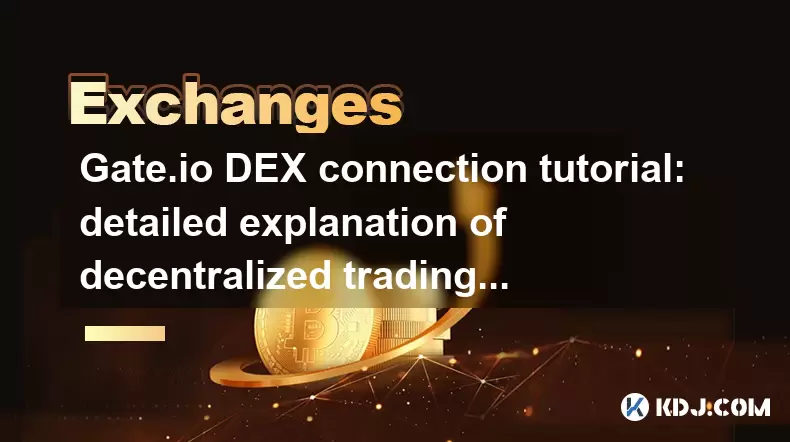
Gate.io DEX connection tutorial: detailed explanation of decentralized trading operation steps
Jun 12,2025 at 08:04pm
Connecting to Gate.io DEX: Understanding the BasicsBefore diving into the operational steps, it is crucial to understand what Gate.io DEX is and how it differs from centralized exchanges. Unlike traditional platforms where a central authority manages user funds and trades, Gate.io DEX operates on blockchain technology, allowing users to trade directly f...
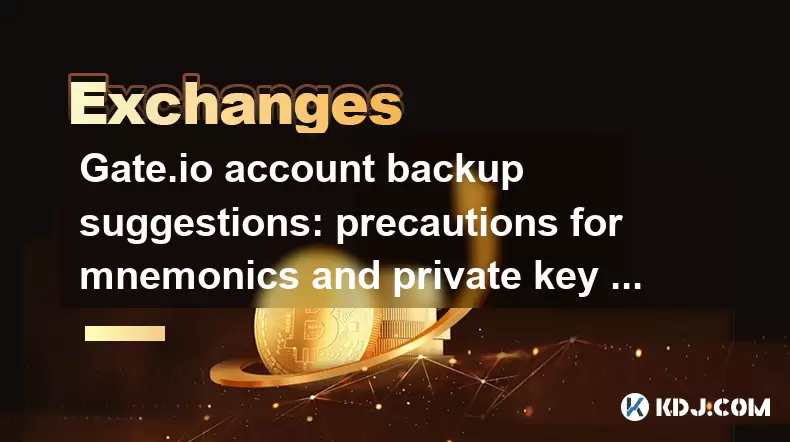
Gate.io account backup suggestions: precautions for mnemonics and private key storage
Jun 12,2025 at 10:56am
Understanding the Importance of Mnemonics and Private KeysIn the world of cryptocurrency, mnemonics and private keys are the core elements that grant users ownership over their digital assets. When using Gate.io or any other crypto exchange, understanding how to securely manage these components is crucial. A mnemonic phrase typically consists of 12 or 2...
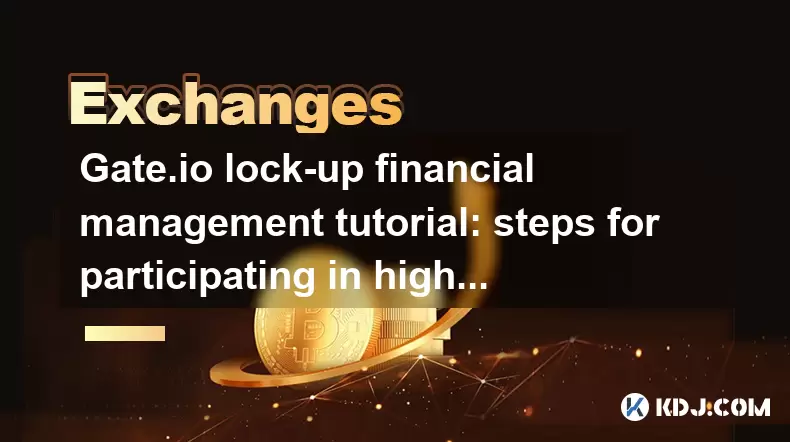
Gate.io lock-up financial management tutorial: steps for participating in high-yield projects and redemption
Jun 13,2025 at 12:43am
What Is Gate.io Lock-Up Financial Management?Gate.io is one of the world’s leading cryptocurrency exchanges, offering users a variety of financial products. Lock-up financial management refers to a type of investment product where users deposit their digital assets for a fixed period in exchange for interest or yield. These products are designed to prov...
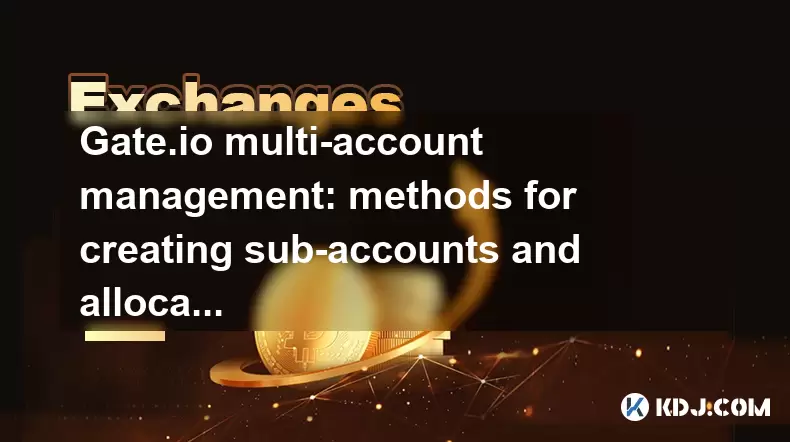
Gate.io multi-account management: methods for creating sub-accounts and allocating permissions
Jun 15,2025 at 03:42am
Creating Sub-Accounts on Gate.ioGate.io provides users with a robust multi-account management system that allows for the creation of sub-accounts under a main account. This feature is particularly useful for traders managing multiple portfolios or teams handling shared funds. To create a sub-account, log in to your Gate.io account and navigate to the 'S...
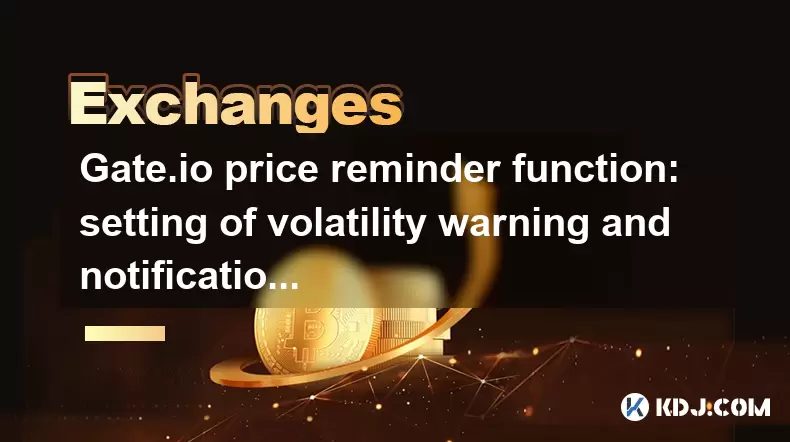
Gate.io price reminder function: setting of volatility warning and notification method
Jun 14,2025 at 06:35pm
What is the Gate.io Price Reminder Function?The Gate.io price reminder function allows users to set up custom price alerts for specific cryptocurrencies. This feature enables traders and investors to stay informed about significant price changes without constantly monitoring market data. Whether you're tracking a potential buy or sell opportunity, the p...

Gate.io trading pair management: tutorials on adding and deleting watchlists
Jun 16,2025 at 05:42am
What Is a Watchlist on Gate.io?A watchlist on Gate.io is a customizable feature that allows traders to monitor specific trading pairs without actively engaging in trades. This tool is particularly useful for users who want to track the performance of certain cryptocurrencies or trading pairs, such as BTC/USDT or ETH/BTC. By organizing frequently watched...

Gate.io DEX connection tutorial: detailed explanation of decentralized trading operation steps
Jun 12,2025 at 08:04pm
Connecting to Gate.io DEX: Understanding the BasicsBefore diving into the operational steps, it is crucial to understand what Gate.io DEX is and how it differs from centralized exchanges. Unlike traditional platforms where a central authority manages user funds and trades, Gate.io DEX operates on blockchain technology, allowing users to trade directly f...

Gate.io account backup suggestions: precautions for mnemonics and private key storage
Jun 12,2025 at 10:56am
Understanding the Importance of Mnemonics and Private KeysIn the world of cryptocurrency, mnemonics and private keys are the core elements that grant users ownership over their digital assets. When using Gate.io or any other crypto exchange, understanding how to securely manage these components is crucial. A mnemonic phrase typically consists of 12 or 2...

Gate.io lock-up financial management tutorial: steps for participating in high-yield projects and redemption
Jun 13,2025 at 12:43am
What Is Gate.io Lock-Up Financial Management?Gate.io is one of the world’s leading cryptocurrency exchanges, offering users a variety of financial products. Lock-up financial management refers to a type of investment product where users deposit their digital assets for a fixed period in exchange for interest or yield. These products are designed to prov...

Gate.io multi-account management: methods for creating sub-accounts and allocating permissions
Jun 15,2025 at 03:42am
Creating Sub-Accounts on Gate.ioGate.io provides users with a robust multi-account management system that allows for the creation of sub-accounts under a main account. This feature is particularly useful for traders managing multiple portfolios or teams handling shared funds. To create a sub-account, log in to your Gate.io account and navigate to the 'S...

Gate.io price reminder function: setting of volatility warning and notification method
Jun 14,2025 at 06:35pm
What is the Gate.io Price Reminder Function?The Gate.io price reminder function allows users to set up custom price alerts for specific cryptocurrencies. This feature enables traders and investors to stay informed about significant price changes without constantly monitoring market data. Whether you're tracking a potential buy or sell opportunity, the p...

Gate.io trading pair management: tutorials on adding and deleting watchlists
Jun 16,2025 at 05:42am
What Is a Watchlist on Gate.io?A watchlist on Gate.io is a customizable feature that allows traders to monitor specific trading pairs without actively engaging in trades. This tool is particularly useful for users who want to track the performance of certain cryptocurrencies or trading pairs, such as BTC/USDT or ETH/BTC. By organizing frequently watched...
See all articles

























































































